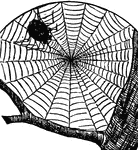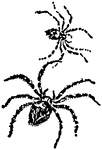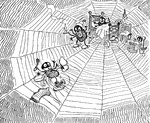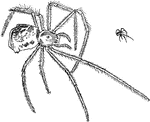Search for "spiders"
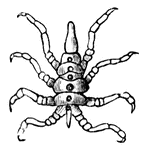
Sea-Spider
The sea spiders are inhabitants of the sea, and they are very often referred to as crustaceans.
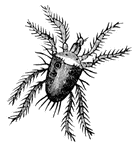
Mite
The mites form with the ticks the order Acarina, and are distinguished by the fact that the abdomen…
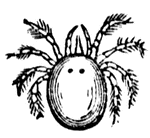
Mite
The mites form with the ticks the order Acarina, and are distinguished by the fact that the abdomen…
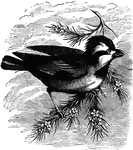
Crested Pardalotte
Usually living around small mountain streams, large spiders have been known to attack and eat the vrested…
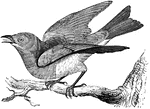
Bluebird
The bluebird feeds on a diet of insects and spiders in the summer and berries in the winter. It usually…
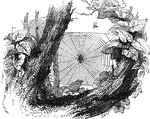
Garden-spiders
"Some, of which the Common Garden Spider, Epeira diadema is an excellent example, construct…
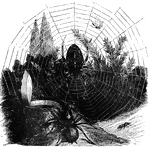
Garden-spider and trap-door spider
"Some spiders, like the Ctenizae, close the mouth of their subterranean resdence with a most…
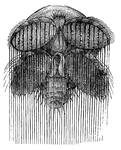
Spinnerets of a spider
"The most remarkable organs perceptable on the abdomen of the spiders are the spinnerets, by…

Mygale
"The spiders with which we in temperate climates are most acquainted are of small size, but in hot regions…

Scorpion
The name of an extensive genus of insects, native to the warm climates of both hemispheres, and belonging…

Spider
An extensive division of insects, which includes the scorpions and mites. The spiders differ from most…
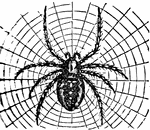
Epeira Diadema
"A genus of spiders, the type of a family called Epeirdae. They are of those spiders which have only…
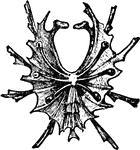
Entosternum
"Entosternum of one of the mygalomorphous spiders; ventral surface. Ph.N., pharyngeal notch. The posterior…

Liphistius Desultor
"Liphistius desultor. Lateral view. I to VI, Appendages of the prosoma cut off at the base. o, Ocular…

Pupa of Reduvious Personatus, Covered with its Cloak of Dust
"By means of its disguise, it can approach little animals which become its prey, such as flies, spiders…
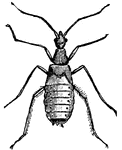
Pupa of Reduvious Personatus, Denuded of its Cloak of Dust
"By means of its disguise, it can approach little animals which become its prey, such as flies, spiders…

Garden Spider
The garden spider is a very common orb-weaver that creates spiral webs in gardens, fields, and forests.

Horseshoe Crab (Adult)
An illustration of an adult horseshoe crab from the dorsal aspect. The horseshoe crab or Atlantic horseshoe…
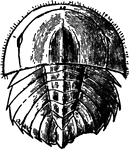
Horseshoe Crab (Young)
An illustration of a young horseshoe crab from the dorsal aspect. The horseshoe crab or Atlantic horseshoe…
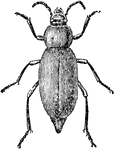
Darkling Beetle
Darkling beetles (also known as Darkening beetles) are a family of beetles found worldwide, estimated…

Tarantula Wolf Spider
The Tarantula Wolf Spider (Lycosa tarantula) is an arachnid in the Lycosidae family of wolf spiders.…
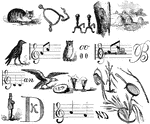
Animal Rebus
"Cats purr, dogs bark, cocks crow, a cow lows, a donkey brays, an eagle screams, parrots talk, spiders…
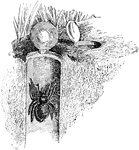
Trapdoor Spider
Spiders (order Araneae) are air-breathing chelicerate arthropods. Trapdoor spiders, of family Ctenizidae,…
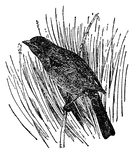
Field Sparrow
The field sparrow is smaller than the song sparrow and is very shy. It likes to eat spiders, ants, and…

Phrynidae
A species of Phrynus, actual size. The species resembles spiders with long feelers and great claws.
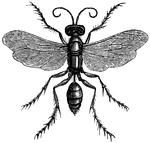
Spider Huntress Wasp
Chalybion caeruleum. "A family of fossorial hymenopters, or digger wasps. The prothorax is narrowed…

Female Black Widow Spider with a View of the Under Side of the Abdomen
Latrodectus mactans. Spiders are "dimerosomatous - that is, have the body divided into two principal…
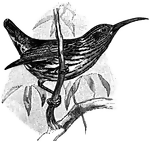
Streaked Spiderhunter
Arachnothera magna. Also called a spider-catcher, the Streaked Spiderhunter is "a bird that catches…




